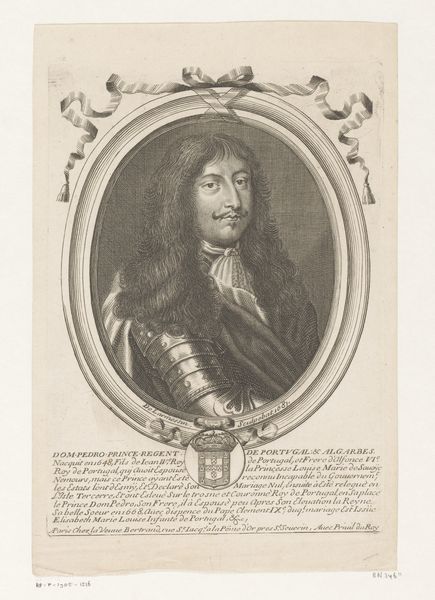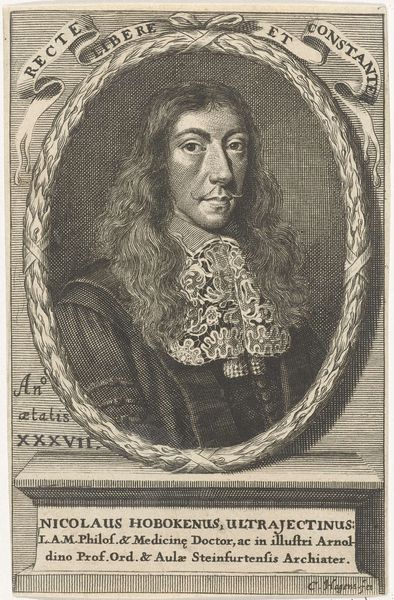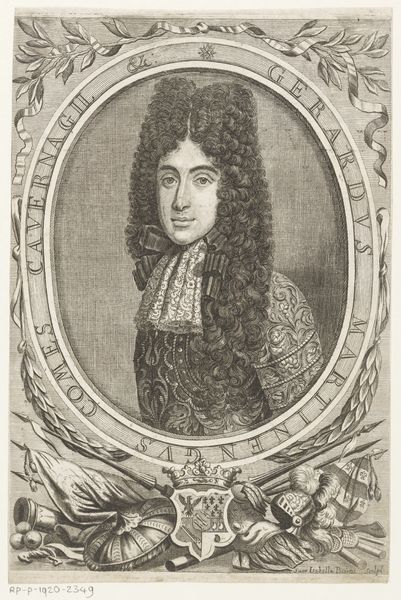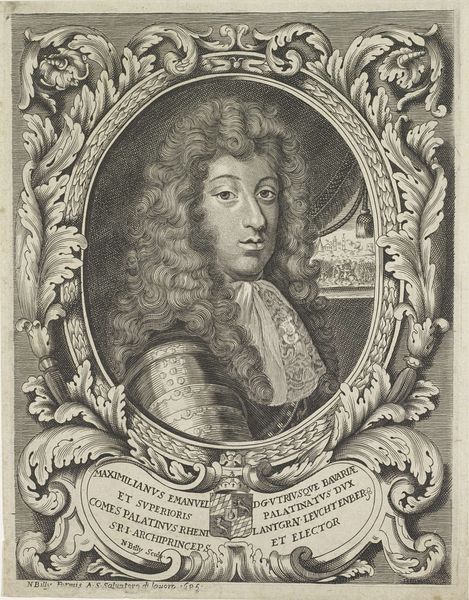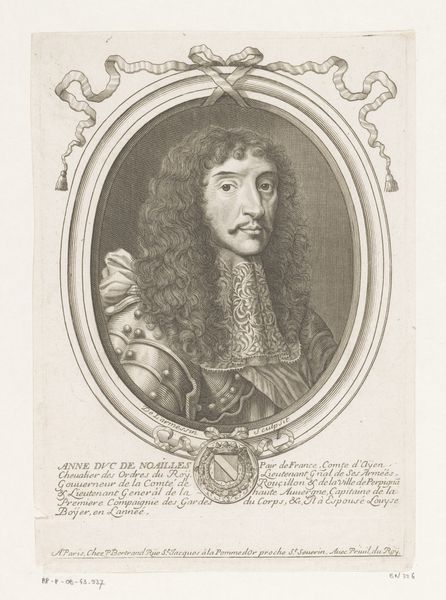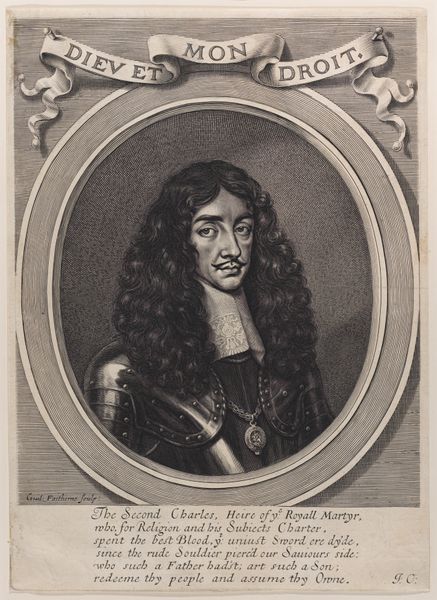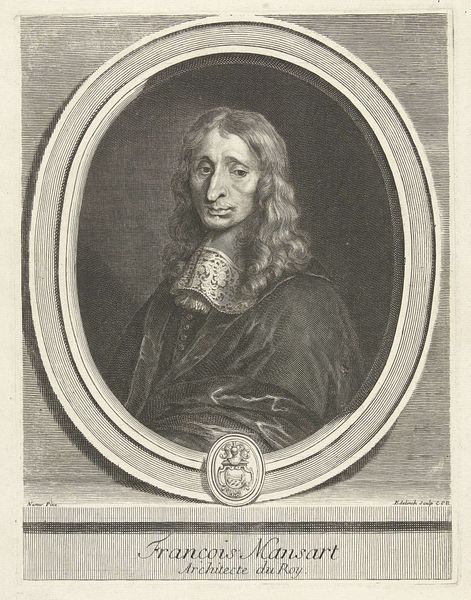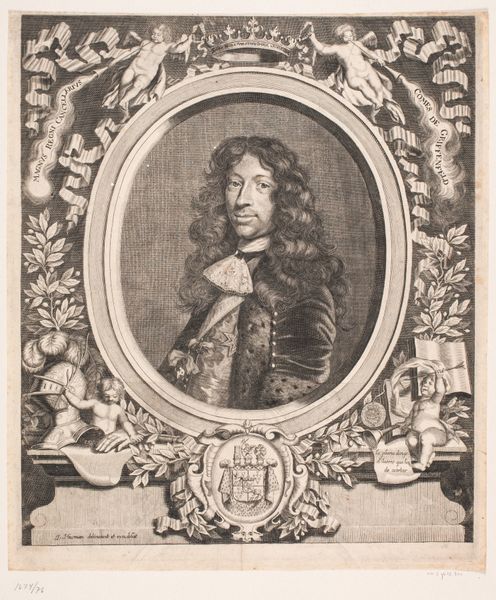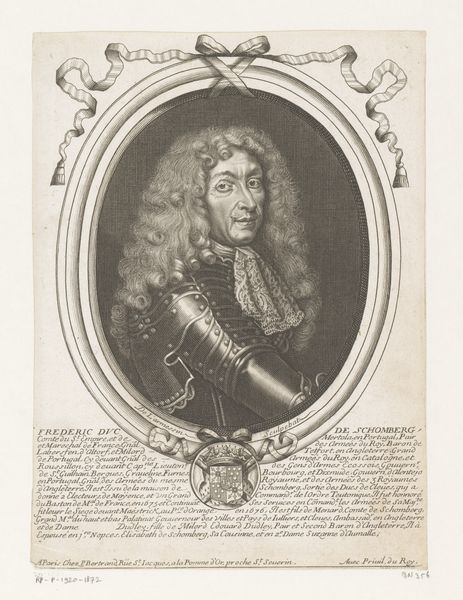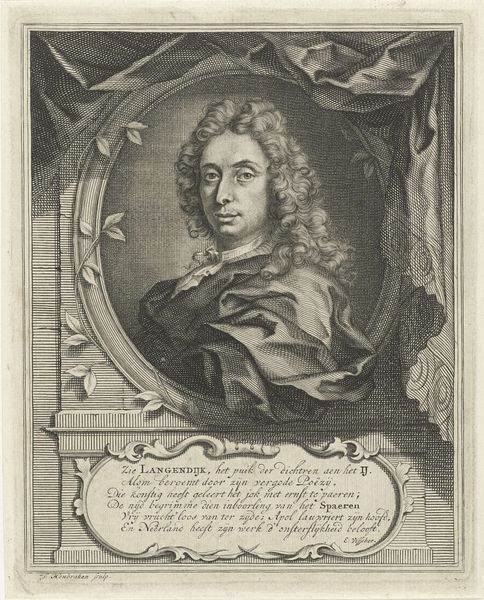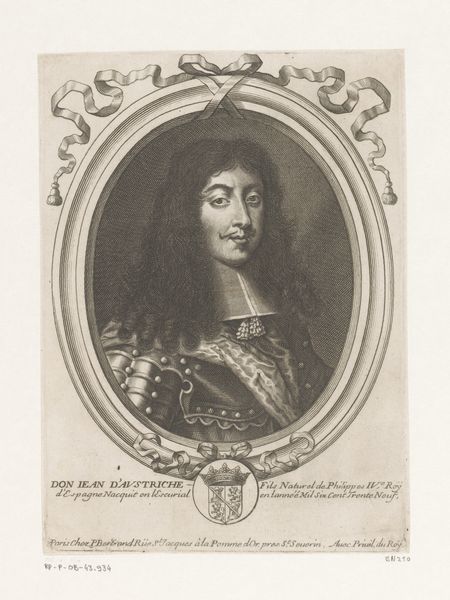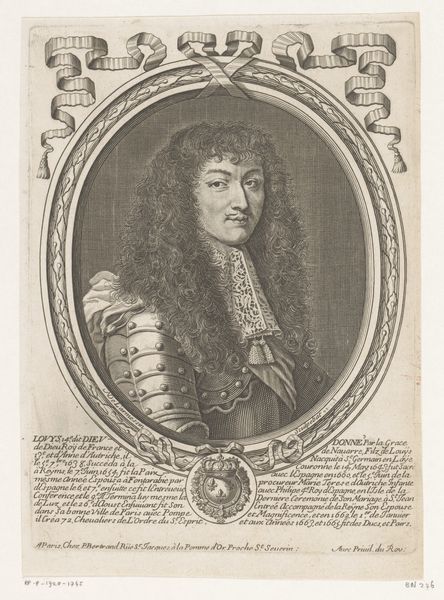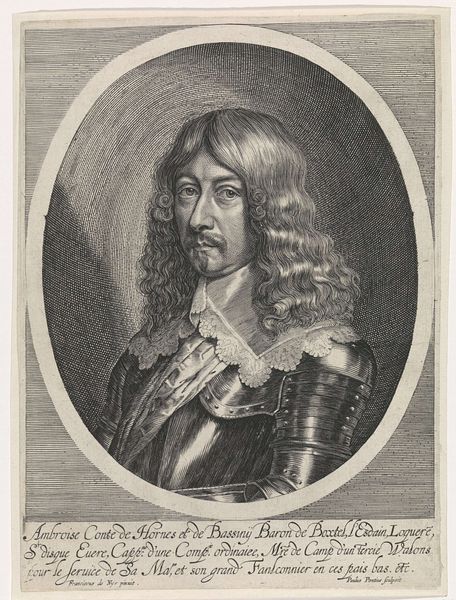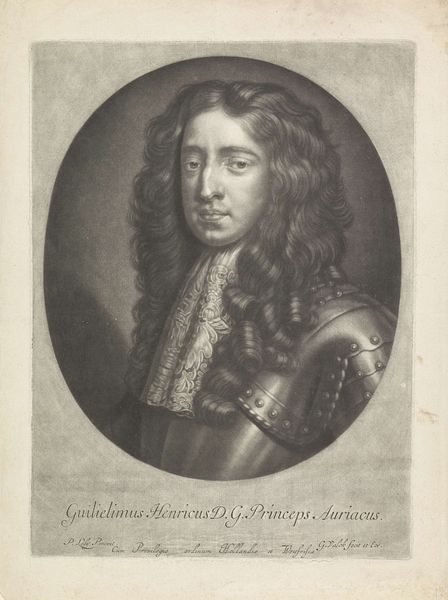
print, engraving
#
portrait
#
baroque
# print
#
engraving
Dimensions: height 136 mm, width 110 mm
Copyright: Rijks Museum: Open Domain
Editor: This engraving, "Portret van Willem III, prins van Oranje" by Michiel Gillig, likely made between 1670 and 1708, presents a dignified portrait. I’m immediately struck by how the details in the hair and armour stand out. What do you see when you look at this piece? Curator: I'm interested in the implications of printmaking. This wasn't a unique object like a painting. Its very nature as a reproducible image indicates a desire for broader circulation, serving perhaps as a form of political currency. It points to both the patronage and the production processes inherent in its making. Editor: So, you’re suggesting its purpose went beyond simple aesthetics? Curator: Precisely! Engraving involved skilled labour. Consider the social status of those involved. From Gillig himself, perhaps commissioned and thus beholden to a patron, down to those who would eventually consume and display this image. It speaks volumes about societal power structures. Note also the inherent qualities of the materials—copperplate, ink, paper—all readily available commodities in a burgeoning capitalist market. Editor: That makes me think about how accessibility and availability influence the perception and meaning of an artwork like this. The engraving enables wider distribution than painting ever could at that time. Curator: Exactly! Consider this engraving as less an aesthetic object and more a carefully manufactured representation embedded within complex systems of patronage, labor, and material circulation. The value lies not just in the image itself but in its making and dissemination. Editor: This completely changes my perspective. Thanks for drawing attention to production and societal context, and questioning established definitions of art! Curator: It reveals the often-unseen web of materials and economic relationships that constitute a piece's significance.
Comments
No comments
Be the first to comment and join the conversation on the ultimate creative platform.
